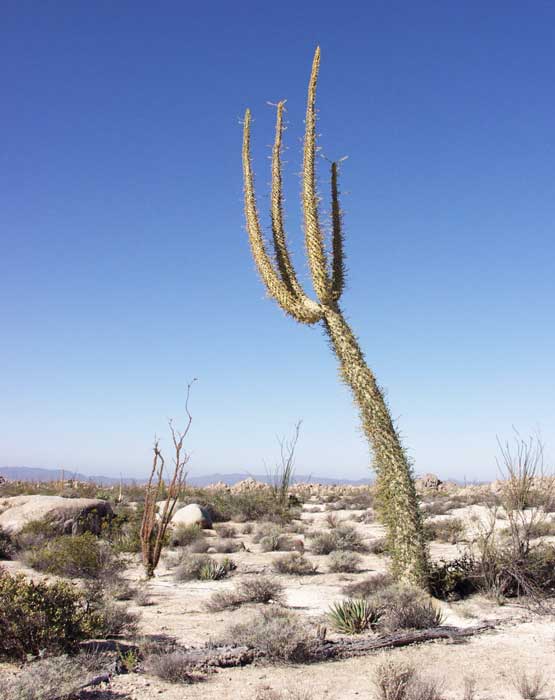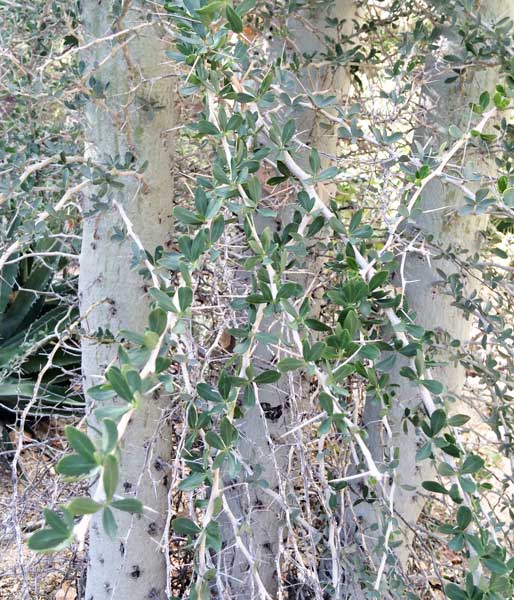Ethnobotany of southern California native plants:
Boojum tree (Idria columnaris)
Boojum tree (Idria columnaris)
This unusual plant from the ocotillo family is native to Baja, Mexico. If you ever make the drive from San Diego down to Cabo San Lucas, keep your eyes open around Vizcaino and you’ll see plenty of boojum. They dot the landscape in a spectacular fashion and help create a singular desert biome in the central Baja peninsula.
Often referred to as an ‘upside-down carrot’, the tree is about 30-50 feet tall with a thick spine-covered ‘stem-succulent’ trunk that tapers at the top like a candle. Branches then extend out chaotically from the crown as if this plant were waving at passers-by.
The Spanish name is ‘Cirio‘, meaning candle, which is a reference to the tapered, candle-like profile.
‘Boojum’, the English name is a tip of the hat to a Lewis Carrol’s poem, “The Hunting of the Snark“.
Psychological ethnobotany
I have not come across any particular food, drink, tools or shelter that indigenous people derived from the boojum. However, the plant still has an ethnobotanical role in the region, in that the boojum was a part of the belief system of the Seri people of Sonora, Mexico.
In Seri belief, if one were to touch the boojum – strong, undesirable winds would begin to blow. This association is clearly related to the wavy appearance of the tree. Even in a dead calm, the boojum looks to be caught in a blustery gale. The odd shape of the boojum certainly maintained a presence in the headspace of the Seri.
Please return to our main Ethnobotany of southern California page.
On our main ethnobotany page, we present a clickable list of the southern California native plants that became a part of the culture of Native Americans and early European settlers. These plants were used for medicine, food, shelter, drink, tools and art.
Warning: The information about plants on this website is intended for general educational purposes only. The author of this website accepts no responsibility for problems arising from the user’s misidentification, misuse, or use of plants. Please read the full TERMS associated with this website.


